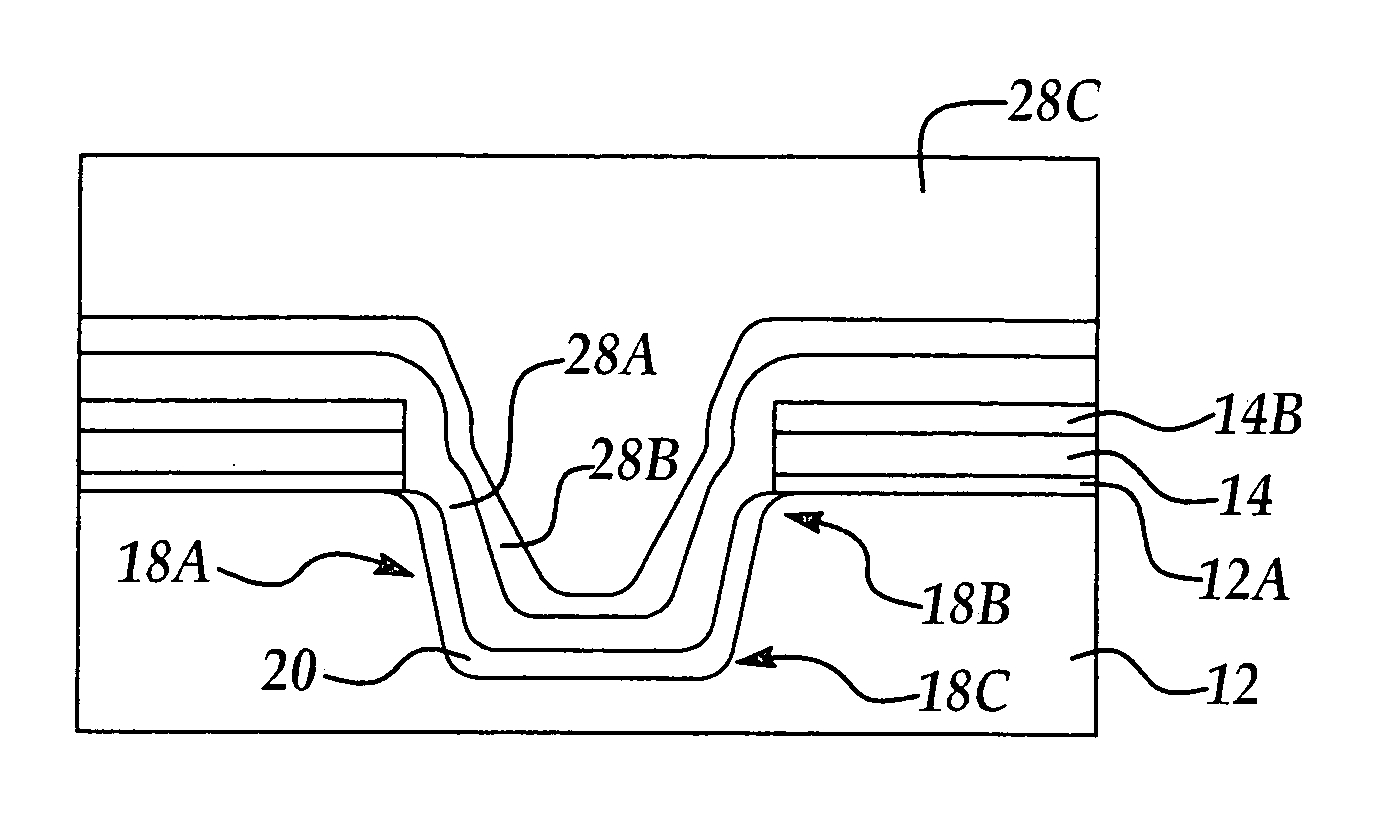Method of achieving improved STI gap fill with reduced stress
a gap filling and stress reduction technology, applied in the field of integrated circuit manufacturing processes, can solve the problems of increased thermal gradient, narrow process window for successful gap filling, and stress across the wafer surface and through the wafer thickness, so as to improve the charge mobility of the cmos device and reduce the stress
- Summary
- Abstract
- Description
- Claims
- Application Information
AI Technical Summary
Benefits of technology
Problems solved by technology
Method used
Image
Examples
Embodiment Construction
[0014]According to the present invention a method for improved gap fill is explained with reference to the formation of an exemplary shallow trench isolation (STI) feature and exemplary CMOS device. While the method of the present invention is particularly advantageously applied to the formation of STI features, it will be appreciated that the method of the present invention may be applied to the filling of other types of gaps or openings in an integrated circuit manufacturing process where reduced stresses may advantageously improve charge mobility.
[0015]In one exemplary implementation of the present invention, referring to FIG. 1A is shown a semiconductor substrate 12, for example single crystalline or polycrystalline silicon. It will be appreciated that the substrate may include epi silicon layer, buried layers, silicon on insulator (SOI), SiGe, and GaAs. A pad oxide layer 12A of SiO2 about 50 Angstroms to about 150 Angstroms is first thermally grown by conventional processes or ...
PUM
 Login to View More
Login to View More Abstract
Description
Claims
Application Information
 Login to View More
Login to View More - R&D
- Intellectual Property
- Life Sciences
- Materials
- Tech Scout
- Unparalleled Data Quality
- Higher Quality Content
- 60% Fewer Hallucinations
Browse by: Latest US Patents, China's latest patents, Technical Efficacy Thesaurus, Application Domain, Technology Topic, Popular Technical Reports.
© 2025 PatSnap. All rights reserved.Legal|Privacy policy|Modern Slavery Act Transparency Statement|Sitemap|About US| Contact US: help@patsnap.com



